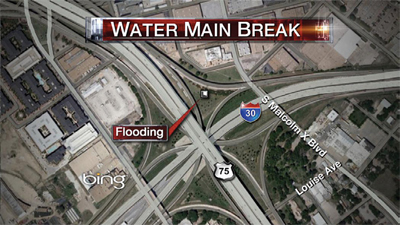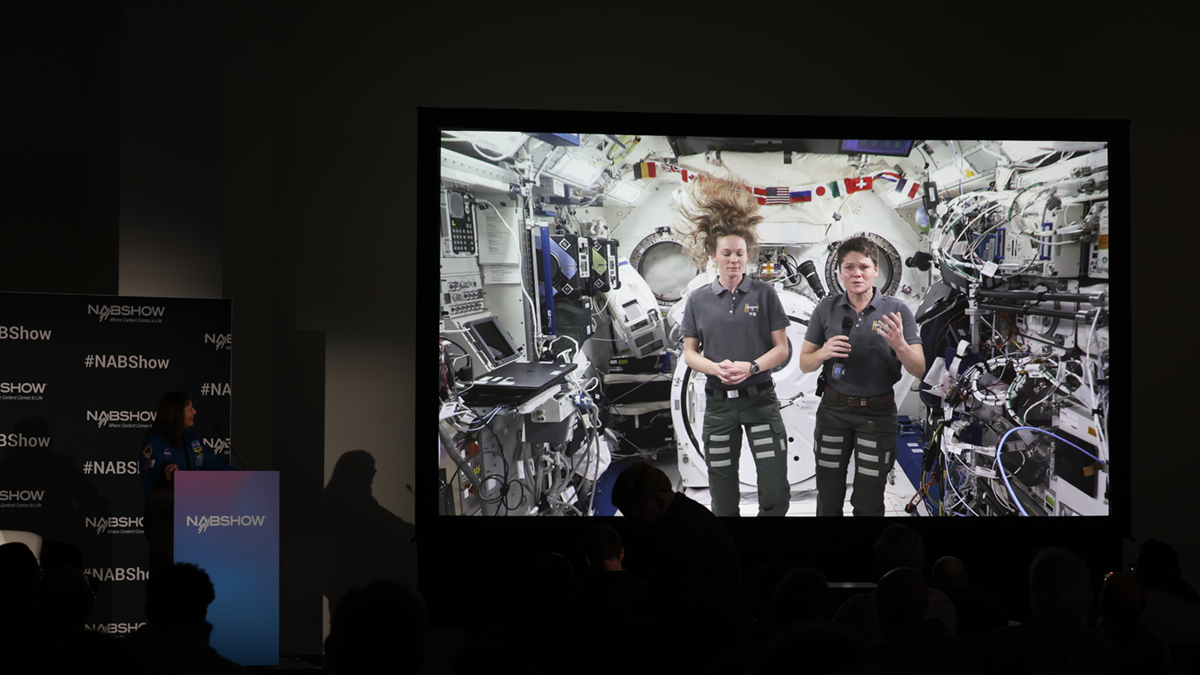Using the Web for News Graphics
OTTAWA—There is nothing worse for a TV newscast than covering a breaking news story live without access to video. In the past, all they could do was put up a slide or graphic, while the anchors filled and waited for their reporters to send back a live feed.

Map created using Chyron's AXIS Online Content Creation tool featuring satellite photography from Microsoft Bing. Today, that's all changed. Instead of making do with a slide, TV newscasts can use Google Earth to create a "fly-in" graphic showing the location of the breaking news story. In those instances where street views exist, they can even tap into these photos. When combined with Google maps, the result is a compelling graphics presentation that looks good on air, and conveys a sense of immediacy that shows the news team is on top of the story—even as they wait for the video.
"There is no reason that broadcasters can't fill their graphics gaps using the Web," says Todd Martin, vice president of strategic partnerships and professional services for Chyron. "It's a resource just waiting to be tapped."
CURRENT TECH IS WEB-CAPABLE
Many of today's TV graphics packages can pull content from the Web, and then allow graphics artists and producers to prep this content for broadcast quickly and easily.
"Chyron AXIS graphics has no problem working with Web content," says Martin. "In our case, we have licensing agreements with Microsoft's Bing that allows our clients to use Bing's aerial maps for on-air graphics. But that's not all: AXIS allows users to pull images from subscription services such as the Associated Press' GraphicsBank, and then creatively combine and edit these images together to produce custom stills and video." Gannett's 23 television stations are currently using AXIS to create graphics in this way.
Pixel Power's standard Clarity graphics system works well with Web content, according to company CEO Pete Challinger. "The Google Earth model you mentioned is a good example of what can be done on the fly. But the graphic possibilities of Web content don't end there. In fact, the actual limiting factor is not what's available online, but rather 'do you have the rights to use it?' This is why broadcasters like subscription services like Google Earth and AP GraphicsBank. They know they can use this content without any legal consequences. That's important when you are trying to stay on top of a breaking news story."
The advent of the Web is not just revolutionizing TV graphics. It is also giving TV news another way to get breaking news content fast; whether via citizen journalists or via nontraditional communications paths.
For instance, "Broadcasters are using Skype for live shots and playing YouTube videos now," says Brian Olson, Marketing Product Manager for Ross Video's XPression graphics system. "Integrating live broadcasts with alternative media—the Web and mobile—is a prime consideration for them." As for accessing this content for air? "It's as easy as opening a Web browser on an XPression system and calling up the proper scene," Olson tells TV Technology. "You can select the whole browser window or just the video player and then crop the image before airing it. Even the cursor can be shown live. The only caveat is that you may have to delay the audio to achieve proper lip sync, depending on how it is routed."

Inexpensive and impromptu live shots are becoming more common as broadcasters utilize web technologies, like Skype, to improve their news coverage. R oss Video's XPression real-time 2D/3D graphics system offers built-in web video capabilities.USE THE WEB NOW
If your station has yet to tap into the Web as a graphics resource, the place to start is by talking to your graphics solution provider. They will have ideas on how best to use your software to access and edit Web content. Just as importantly, they will likely be able to steer you towards the safe and legal use of Web material, so that you don't end up being sued.
"The Web is a great resource for graphics-hungry broadcasters, but they have to use it wisely and legally," says Todd Martin. "Once armed with this knowledge, there is no reason not to use the Web for all it's worth. To put it plainly, the days of sitting on a news set with the words 'Breaking News' over the anchor's shoulder, and nothing else, are over."
Get the TV Tech Newsletter
The professional video industry's #1 source for news, trends and product and tech information. Sign up below.
James Careless is an award-winning journalist who has written for TV Technology since the 1990s. He has covered HDTV from the days of the six competing HDTV formats that led to the 1993 Grand Alliance, and onwards through ATSC 3.0 and OTT. He also writes for Radio World, along with other publications in aerospace, defense, public safety, streaming media, plus the amusement park industry for something different.

